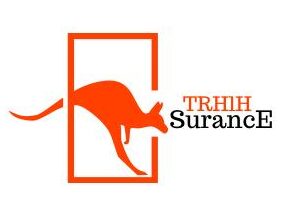What Is Liability Car Insurance? What Does It Cover?
When it comes to your auto insurance policy, liability car insurance is a key part of keeping you safe on the road. In the event that you are found at fault in an accident, carrying the right amount of liability insurance could help you not lose tens of thousands of dollars paying for someone else’s bodily injury or property damage.
Key Takeaways
- Essential Coverage: Liability car insurance covers bodily injury and property damage costs if you’re at fault in an accident, protecting you from significant financial loss.
- State Requirements: Each state has different minimum liability insurance coverage requirements. Ensure you meet or exceed these limits so you’re adequately protected and legally covered on the road.
- Beyond Liability Insurance: While some drivers only require liability insurance coverage, evaluating your financial situation and driving habits can help you determine if you need more .
Without liability car insurance, you could be considered underinsured by state authorities. If you get pulled over, you may get a ticket or be forced to pay fines for not carrying the state minimum coverage.
What is liability car insurance, and how do you know if you have enough? By understanding how much coverage you should have, you can prepare yourself financially in the event you get into a car accident.
What Is Liability Car Insurance?
Liability car insurance is one of many individual benefits that comprise a traditional auto insurance plan. What makes liability coverage important is how it helps you in the event of a car accident.
In most states, accidents end by assigning fault. When law enforcement agencies conduct an investigation, the actions of each driver ultimately determine who is responsible for the accident or if the accountability can be split between the two. Whichever party is found “at fault” will usually pay for damages out of their liability car insurance coverage.
Although car accidents happen every day, your actions immediately before could determine if you are “at fault.” If you were driving distracted because you were on the phone, hit the brakes too late, and ended up rear-ending another driver, or got into an accident by driving through a red light, you could be found responsible for the crash, which could increase your insurance premium. In this case, your liability car insurance policy could pay for damages associated with the incident.
What Does Liability Car Insurance Cover?
Liability car insurance is often split into three different maximum coverage limits, each covering a certain portion of the damages caused in the accident. A bodily injury per person limit applies to bodily injury damages incurred by each person, a bodily injury per accident limit applies to bodily injury damages incurred by all persons in any one accident, and a property damage limit applies to all property damages in any one accident.
Bodily Injury per Person
Car accidents don’t just bend auto frames and break wheels. In high-speed accidents or incidents where vehicles roll over, individuals in those cars can end up with cuts, broken bones, or even concussions. If you are at fault, you may need to lean on your liability car insurance coverage.
As part of your liability car insurance, the bodily injury per person limit covers injuries if you are found “at fault.” The payments would cover bodily injury damages of a person injured in an accident, such as medical bills, up to the maximum limit. For example: If you have a liability policy with $75,000 in coverage for bodily injury per person, the limit could pay for an ambulance to the emergency room, doctor’s bills, or visits to specialists for someone injured, up to the maximum limit per person.
Bodily Injury per Accident
Although your liability car insurance has a bodily injury per person limit, the per person limit is subject to a maximum limit for bodily injury per accident. The bodily injury per accident limit caps how much your insurance policy could pay out per accident, no matter how many persons are injured.
How does the bodily injury per accident limit apply? As an example: You are found “at fault” in an accident, and there were four people in the other car. If everyone were injured and ended up going to the hospital, your bodily injury per person limit would apply to medical bills for care to each person injured in the accident, but your policy would pay only up to the maximum bodily injury per accident limit. If your bodily injury per accident limit is $225,000, your liability policy would only pay for bills up to this maximum that are incurred by all persons injured in any one accident.
Property Damage Liability
While car accidents can “total” your car, it may not be the only thing broken after a collision. If you end up “at fault” in a car accident, you could also be held responsible for damaging or destroying someone else’s property, like the other person’s car involved in the accident or the fencing around someone’s property. As part of your liability car insurance, property damage liability coverage can help you pay for damages to someone else’s property involved in the accident.
For example: If you cause damage to someone else’s car by running your car into it and you’re at fault, the property damage portion of your liability car insurance could pay out costs to repair the damaged property. Just like your other coverages, the property damage benefit is subject to a maximum limit. If your liability coverage has a limit of $75,000, your insurance policy could pay for property damage up to that amount.
Liability Car Insurance vs. Other Types of Insurance
While liability car insurance is essential, it’s only one part of your overall protection. Here’s how it compares to other types of auto insurance:
- Collision Insurance: Covers damage to your car from collisions, regardless of fault. If you hit another car or a tree, collision insurance pays for your car’s repairs.
- Comprehensive Insurance: Covers non-collision incidents like theft, vandalism, and natural disasters. If your car is stolen or damaged by a hailstorm, comprehensive insurance helps cover the costs.
- Personal Injury Protection (PIP): Covers medical expenses for you and your passengers, regardless of fault. A PIP can cover medical bills, lost wages, and other related expenses.
While liability insurance only covers damages to others when you’re at fault, additional coverage can protect you and your vehicle in different scenarios.
Is Liability Car Insurance Required in Every State?
Every state has a different liability car insurance requirement for their licensed drivers, including minimum coverage levels. How much insurance you need will all depend on where you live.
As it stands today, most states have “tort liability” laws, which require drivers to hold liability car insurance for the vehicles they drive. If they are found responsible for a car accident, their auto insurance benefits must be able to pay for bodily injury of the individuals injured as a result of the accident, as well as any property damaged in the immediate aftermath. Moreover, an at-fault accident can be reported on your driving record, which could drive your insurance rates up.
However, the Insurance Information Institute notes 12 states, Puerto Rico and Washington D.C., are considered “no-fault” states. In these states, drivers are required to hold policies with “personal injury protection” benefits in line with their state requirements. Instead of paying based on fault, personal injury protection benefits allow injured policyholders to seek reimbursement under their own policy without regard to who was at fault for the accident.
This doesn’t mean that you can’t purchase liability car insurance coverage if you live in a “no-fault” state. “No-fault” states still generally require drivers to purchase liability car insurance to provide coverage for damages to other people involved in the accident, where the damages are not recoverable by the other person under personal injury protection benefits. The key advantage of choosing enough liability coverage in addition to personal injury protection benefits is that you could potentially reduce your odds of an accident ending in a costly lawsuit by paying for the other party’s injuries that are not covered by their personal injury protection benefits.
How Much Liability Car Insurance Do I Need?
Although everyone is required to have liability car insurance, there is no “one size fits all” auto insurance policy for all drivers. Your situation is unique, and the maximum benefit that you might need may be different from your neighbor, your family, or someone driving the same exact vehicle as yours. How do you determine how much liability coverage you need on your insurance policy and how much you should pay for car insurance?
According to the Insurance Information Institute, the average bodily injury claim in 2019 in states where a party can be assigned fault was $18,417. In the same group of 38 states, the average property damage claim cost was $4,525. Although the odds of getting in an accident with bodily injury or property damage may seem small — data from the III shows 1.07% of Americans filed a bodily injury claim, while 3.18% filed a property damage claim — it is a situation where you don’t want to test the limits of your liability car insurance.
While you may think that your state-minimum liability car insurance levels are adequate, you may be surprised by how low the requirements are. Some states only require drivers to hold $15,000 in bodily injury per person coverage and as low as $5,000 property damage liability per accident coverage. If you were to get in a serious accident which resulted in injuries to other motorists, the state-required levels may not cover the full claim — which could potentially expose you to additional liability out-of-pocket.
As you begin comparing car insurance quotes online and start considering how much liability car insurance you need, start by looking at your savings account. In the event of an accident, would you be able to pay for damages to other drivers or property holders? Although your state may have a minimum liability insurance requirement, it may be better to purchase more to have additional coverage. By holding a policy with higher maximum limits, your insurance company may pay more before you have to go out-of-pocket, which may prevent you from dipping into your emergency funds.
Finally, consider your monthly budget and how much you could pay for auto insurance. While a higher liability car insurance maximum limit may increase your monthly premium payment, holding the additional coverage may cover additional payments if you are found liable in a car accident. Once again, having a slightly higher insurance premium could prevent you from losing a portion of your emergency savings.
Get the Best Rates on Liability Car Insurance from The General®️
Getting the right level of liability car insurance doesn’t have to be a challenge. The General®️ can help you find the perfect amount of coverage to keep you on the road without worrying about your financial situation. Start by getting a liability insurance quote today, and drive confidently with the right coverage paired for your lifestyle.
Frequently Asked Questions About Liability Car Insurance
What is liability auto insurance, and why do I need it?
A: Liability auto insurance covers bodily injury and property damage you cause to others in an accident where you’re at fault. It’s legally required in most states.
What does liability insurance cover?
It covers medical expenses, lost wages, and other costs for injured parties, plus repairs or replacement for damaged property.
Is liability insurance only enough to protect me?
Liability insurance is required but doesn’t cover your injuries or vehicle damage. Comprehensive and collision insurance provides additional protection.
How much liability insurance coverage do I need?
Consider your assets, risk factors, and state requirements. Higher limits offer more protection but increase premiums. Evaluate your financial situation and driving habits to determine the right amount of coverage for you.

